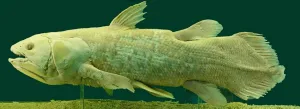Emerging robotics technology may lead to better buildings in less time
2021-02-10
(Press-News.org) WEST LAFAYETTE, Ind. - Emerging robotics technology may soon help construction companies and contractors create buildings in less time at higher quality and at lower costs.
Purdue University innovators developed and are testing a novel construction robotic system that uses an innovative mechanical design with advances in computer vision sensing technology to work in a construction setting.
The technology was developed with support from the National Science Foundation.
"Our work helps to address workforce shortages in the construction industry by automating key construction operations," said Jiansong Zhang, an assistant professor of construction management technology in the Purdue Polytechnic Institute. "On a construction site, there are many unknown factors that a construction robot must be able to account for effectively. This requires much more advanced sensing and reasoning technologies than those commonly used in a manufacturing environment."
The Purdue team's custom end effector design allows for material to be both placed and fastened in the same operation using the same arm, limiting the amount of equipment that is required to complete a given task.
Computer vision algorithms developed for the project allow the robotic system to sense building elements and match them to building information modeling (BIM) data in a variety of environments, and keep track of obstacles or safety hazards in the system's operational context.
"By basing the sensing for our robotic arm around computer vision technology, rather than more limited-scope and expensive sensing systems, we have the capability to complete many sensing tasks with a single affordable sensor," Zhang said. "This allows us to implement a more robust and versatile system at a lower cost."
Undergraduate researchers in Zhang's Automation and Intelligent Construction (AutoIC) Lab helped create this robotic technology.
The innovators worked with the Purdue Research Foundation Office of Technology Commercialization to patent the technology.
This work will be featured at OTC's 2021 Technology Showcase: The State of Innovation. The annual showcase, being held virtually this year Feb. 10-11, will feature novel innovations from inventors at Purdue and across the state of Indiana. More information is available by emailing showcase@prf.org.
The innovators are looking for partners to continue developing and commercializing their technology. For more information on licensing and other opportunities, contact Matt Halladay of OTC at mrhalladay@prf.org and mention track code 2018-ZHAN-68094.
INFORMATION:
About Purdue Research Foundation Office of Technology Commercialization
The Purdue Research Foundation Office of Technology Commercialization operates one of the most comprehensive technology transfer programs among leading research universities in the U.S. Services provided by this office support the economic development initiatives of Purdue University and benefit the university's academic activities through commercializing, licensing and protecting Purdue intellectual property. The office is located in the Convergence Center for Innovation and Collaboration in Discovery Park District, adjacent to the Purdue campus. In fiscal year 2020, the office reported 148 deals finalized with 225 technologies signed, 408 disclosures received and 180 issued U.S. patents. The office is managed by the Purdue Research Foundation, which received the 2019 Innovation and Economic Prosperity Universities Award for Place from the Association of Public and Land-grant Universities. In 2020, IPWatchdog Institute ranked Purdue third nationally in startup creation and in the top 20 for patents. The Purdue Research Foundation is a private, nonprofit foundation created to advance the mission of Purdue University. Contact otcip@prf.org for more information.
About Purdue University
Purdue University is a top public research institution developing practical solutions to today's toughest challenges. Ranked the No. 5 Most Innovative University in the United States by U.S. News & World Report, Purdue delivers world-changing research and out-of-this-world discovery. Committed to hands-on and online, real-world learning, Purdue offers a transformative education to all. Committed to affordability and accessibility, Purdue has frozen tuition and most fees at 2012-13 levels, enabling more students than ever to graduate debt-free. See how Purdue never stops in the persistent pursuit of the next giant leap at purdue.edu.
Writer: Chris Adam, cladam@prf.org
Source: Jiansong Zhang, zhan3062@purdue.edu
[Attachments] See images for this press release:

ELSE PRESS RELEASES FROM THIS DATE:
2021-02-10
The findings add to current knowledge of how insects fly and keep stable in the air. They could also help to inspire new designs in small aerial vehicles like drones, which can be useful for search-and-rescue attempts and building inspection.
Our colourful sunny-day companions can glide, fly backwards, and travel up to 54 km/h when hunting prey or escaping predators - but like any flying creature, they can be thrown off balance and even find themselves upside down.
Many land-based animals like cats, and aerial animals like hoverflies, rotate themselves around a head-to-tail ...
2021-02-10
During a study with captive vampire bats at the Smithsonian Tropical Research Institute (STRI) in Panama, a young vampire bat pup was adopted by an unrelated female after its mother died. Although this observation was not the first report of adoption in vampire bats, it is uniquely contextualized by more than 100 days of surveillance-camera footage. This footage captured by STRI research associate Gerry Carter's lab at Ohio State University reveals intimate details about the changing social relationships between the mother, the pup and the adoptive mother throughout their time in captivity.
"The adoption took place after a very sad but ultimately serendipitous occurrence," ...
2021-02-10
Adopting policies that are consistent with achieving the Paris Agreement and prioritise health, could save 6.4 million lives due to better diet, 1.6 million lives due to cleaner air, and 2.1 million lives due to increased exercise, per year, across nine countries.
New research from The Lancet Countdown on Health and Climate Change published in a special issue of The Lancet Planetary Health journal highlights the benefits to health if countries adopt climate plans - Nationally Determined Contributions (NDCs) - that are consistent with the Paris Agreement aim of limiting warming to "well below 2°C". [1,2]
The countries considered in the study represent ...
2021-02-10
The notion of social distancing rose to public prominence approximately a year ago, when health officials began recommending it as a way to slow the spread of the novel SARS-CoV-2 virus. Despite the novelty of the concept among many contemporary human audiences, social distancing has considerable precedent among animals.
Writing in BioScience, Mark Butler of Florida International University and Donald C. Behringer of the University of Florida outline the role of social distancing in nature and compare it with its human counterpart. They describe numerous animals in which distancing has evolved, including guppies, chimpanzees, birds, ants, and mice, among many others. ...
2021-02-09
The capture of the first living Coelacanth, a mighty ocean predator, off the coast of South Africa caused quite a stir in 1938, 65 million years after its supposed extinction. It became known as a "living fossil" owing to its anatomy looking almost identical to the fossil record. But while the Coelacanth's body may have changed little, its genome tells another story.
Toronto scientists have now revealed that the African Coelacanth, Latimeria chalumnae, gained 62 new genes through encounters with other species 10 million years ago. Their findings are reported in the journal Molecular Biology ...
2021-02-09
Headlines like "Black Friday Shoppers Trampled in New York" and popular television shows such as "Extreme Couponing" remind us how crazy consumers can get about retail sales promotions. This enthusiasm for getting bargains has been termed "deal proneness."
Past research has indicated that, to some degree, people become deal prone through being taught by their parents. But a new paper, "Born to Shop? A Genetic Component of Deal Proneness," published in the Journal of the Association for Consumer Research, provides evidence that our genes also play a role in causing bargain-hunting enthusiasm.
To demonstrate this genetic factor, authors Robert Schindler, Vishal Lala, and Jeanette Taylor ...
2021-02-09
Washington, DC-- New research led by Carnegie's Yingwei Fei provides a framework for understanding the interiors of super-Earths--rocky exoplanets between 1.5 and 2 times the size of our home planet--which is a prerequisite to assess their potential for habitability. Planets of this size are among the most abundant in exoplanetary systems. The paper is published in Nature Communications.
"Although observations of an exoplanet's atmospheric composition will be the first way to search for signatures of life beyond Earth, many aspects of a planet's surface habitability are influenced by what's happening beneath the planet's surface, and that's where ...
2021-02-09
Nutritionists have been touting the health benefits of seafood for years. Dietary guidelines recommend that the average adult get at least two servings of seafood per week. But the push to increase our consumption of seafood can put a strain on the seafood industry and create more waste.
"Many fisheries are fully or overexploited," said Lekelia "Kiki" Jenkins, an associate professor at Arizona State University's School for the Future of Innovation in Society in the College of Global Futures. "We are pushing our fisheries to the brink that they can sustain. Meanwhile, consumers are wasting nearly half of the fish they buy. We need to understand our waste behaviors and put a mechanism into place so that we use what we catch."
Jenkins is researching ways to improve sustainability in ...
2021-02-09
Announcing a new article publication for BIO Integration journal. In this review article the authors Yue Li, Zhiyi Chen and Shuping Ge from First Affiliated Hospital of University of South China, Hengyang, China and Tower Health and Drexel University, Philadelphia, PA, USA summarize current state of the art applications of microbubble-cell interactions and sonoporation effects to cellular functions.
Ultrasound combined with microbubble-mediated sonoporation has been applied to enhance drug or gene intracellular delivery. Sonoporation leads to the formation of openings in the cell membrane, triggered by ultrasound-mediated oscillations and destruction of microbubbles. Multiple mechanisms are involved in the occurrence ...
2021-02-09
Announcing a new article publication for BIO Integration journal. In this review article the authors Xiuling Li, Shunung Liang, Chee Hwee Tan, Shuwen Cao, Xiaoding Xu, Phei Er Saw and Wei Tao from Sun Yat-sen University, Guangzhou, China, Guangzhou University of Chinese Medicine, Guangzhou, China and Center for Harvard Medical School, Boston, MA, USA discuss the potential benefits of four plants endogenous to China and the enhancement of their therapeutic efficacy by nanotechnology intervention.
Plant derived natural products have been used for the treatment of various human diseases long before the intervention of modern medicine. The basis of modern medicine is still inspired by traditional medicine and therapies. However, ...
LAST 30 PRESS RELEASES:
[Press-News.org] Emerging robotics technology may lead to better buildings in less time



